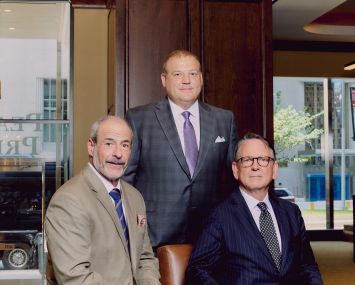Taylor Swift’s New Movie a Lifeline to Malls and Movie Theaters
And it’s not just the foot traffic. Meanwhile, Beyonce’s flick waits in the winter wings.
By Patrick Sisson October 12, 2023 1:11 pm
reprints
Hip-hop mogul Jay-Z famously says he’s “not a businessman, he’s a business, man.”
But that boast pales in comparison to being an economic force of nature like Taylor Swift and Beyoncé, whose recent Eras and Renaissance concert tours, respectively, saw the performers become country-size economies in their own right, not just generating billions of dollars but spurring inflation and literally moving markets in ways that caught the eye of the Federal Reserve.
The titanic economic impact of these once-in-a-lifetime concert events, as well as sporting draws like Lionel Messi in Miami, come as the experience economy has roared back since the pandemic’s early days. Swift’s 146-date Eras tour alone, according to travel industry economists, generated roughly $10 billion in consumer spending, including retail and restaurants, the equivalent of 55 Super Bowls. Her relationship with Kansas City Chiefs tight end Travis Kelce has even benefited football economics through increased jersey sales, social media attention, TV audiences, and even more prop bets on Kelce’s performance.
Retail sales and activity have appropriately reshaped themselves for a post-pandemic, in-person boom; last year, traffic to top-tier malls was up 12 percent compared to pre-pandemic levels. From August 2022 to 2023, spending at bars and restaurants, as well as health and wellness centers, was up more than 7 percent, per Cushman & Wakefield data, while pandemic “winners” such as home improvement, books, hobby centers, and furniture and appliances all saw sales declines.
“The events are what pays the bills,” said SimonCRE CEO Joshua Simon, whose development firm focuses on retail. “Being a landlord in retail today, you have to provide additional services. Tenants and landlords need to work together to provide themselves unique opportunities and think about the Instagram moments.”
With all these trends aligning and data points underscoring the economic impacts of live events, malls, other retail and commercial real estate in general should cash in on the halo effect of hot tickets. Swift fans, after all, spent $1,300 per person on average per show, surveys found, nearly double what they expected, and set hotel occupancy records.
On the one hand, it’s hard to capture one-time, special events. Typical retail spaces aren’t designed to handle crowds of that size, said Simon, and it’s not really a way to run the business.
But, of course, CRE already has bought into, and benefited from, the experience economy, placing an emphasis on more programming, attracting concepts like competitive socializing (think games), and adding more entertainment options. These events — as well as the magnetic draw expected for Swift’s Eras concert tour film hitting nearly 600 U.S. AMC theaters with record-setting presales this month — speak to the power of in-person events and programming. It might just be a matter of retailers, um, tailoring their strategies a little to cash in more.
“I think a lot of it is, can you tap into the hype?” said Ethan Chernofsky, marketing chief at analytics firm Placer.ai in regard to the retail response to this summer’s megatours. “If I’m a major shopping center, I don’t know that my strategy is changing dramatically.”
In the case of concerts, the valuable move for retailers and brands would be to go where the fans are, Chernofsky said, and create more flexible retail spaces at stadiums and other music venues. In other words, tap into the buying power of a high-disposable-income demographic when they’re “in an emotional state of excitement with the people they love most taking in something they are stupidly passionate about.”
It’s critical to have a space fans can mine when the opportunity is right. The “Barbie” movie stimulated retail spending, according to Bank of America analysts. Also, a score of marketing opportunities, such as Barbie boxes for photo opps for costume-wearing ticketholders and pop-up stores by marquee beauty brands like Lush, transformed flexible space into magnets for fans. Toy maker Mattel partnered with 100 brands for the film.
There’s a big chance the Eras movie (and a Beyoncé movie coming in December) could have a similar impact, or at least offer similar cross-merchandising and special event opportunities at retail sites for savvy stores and operators. AMC has said it’s increasing ticket-booking capacity in anticipation of heavy traffic, showing it at least four times a day all weekend at every location. Four other major fall movies moved their release dates to not compete with what’s expected to be a behemoth.
“Retail has already entered a new phase, where more important than brick and mortar is experience and love,” said Andy Stalman, managing director of Totem Branding, a global design firm. “The challenge is to be more attractive than Netflix, YouTube, TikTok and Instagram, and the key is in the experiences.”
That means operators focusing on more innovative “first spaces” — shared public space that’s flexible enough to be easily adapted for pop-up shops, exhibitions, community events, workshops and cultural activities. Overall, retail spaces, including malls and open-air centers, should focus on more welcoming entrances, Stalman said. These can include well-designed signage, landscaping and lighting, as well as increased client services, such as concierge services, package storage and delivery, personal shopping and child care facilities. The entrances should also include sharper wayfinding and more modern design.
More and more operators are including the types of amenities, such as health and wellness outlets as well as child care and early childhood development centers, which allow for extended shopping time and repeat business, said Alanna Loeffler, managing director of business strategy for Cushman & Wakefield.
“Almost everyone in the industry agrees about flexibility in space design, it’s just that a minority puts it into practice,” Stalman said. “Those in charge continue to see retail through an Excel cell and not through the minds and hearts of customers. Those who have understood it are seeing their income statement grow.”
As retail recalibrates its relationship with events, it’s also reacting to significant shifts in e-commerce. After years of steady growth and a pandemic-era boost, e-commerce penetration has leveled off. Cushman & Wakefield research currently measures online shopping as roughly 21 percent of all U.S. retail sales, a market share that’s held steady since mid-2020. Online shipping has become a much less profitable sales channel for retailers, too. Platforms like Amazon take a significant cut of sales, customer acquisition costs continue to rise, and increasing returns and rising shipping costs eat into margins.
This is one of the main dynamics behind the drive for direct-to-consumer brands to find physical locations and create outposts for pick-up, customer acquisition and marketing, as well as sales. In 2020 and 2021, high retail vacancy rates and ascendancy of e-commerce led to speculation that large swaths of retail space and anchor tenants like department stores would become entertainment and activation spaces.
That didn’t happen. Instead, as e-commerce plateaued and became less profitable, more brands have sought additional physical locations. Store channels have become ways to fuel e-commerce growth, said Ron Thurston, co-founder of OSSY, a retail consulting agency. While large department stores and Class B malls that held them up as anchors have suffered, small, high-end specialty retail is booming, he said. These are the kinds of stores where brands acquire customers, which is done through events and activation.
“The headlines have said Amazon was taking everybody’s business, and it’s just not true,” said Thurston. “You go to the mall, and you can’t find parking now. It’s packed. People are willing to be in large venues with lots of people. They’re craving it.”
Brands in search of more outposts have been seeking shorter-term leases and more flexible spaces, more to make an impression than to stock a large quantity of goods. Totem Branding’s Stalman said more shopping centers in the future will likely allocate space for experience-focused zones including food halls and interactive displays, as well as centers to showcase products in a more immersive way. For instance, this fall, the Camp store in the Westfield Century City mall in Los Angeles organized a Bluey experience, a real-world chance for kids to check out the popular animated series. As Thurston sees it, it’s an excellent way to drive sales and foot traffic, and capture customer data, for the next special event.
In response, developers and owners have focused on adaptive store layouts that can be reconfigured to accommodate different brands, pop-up shops and changing product assortments, as well as provide room for e-commerce fulfillment. Landlords benefit directly from marketing and entertainment spending since many tenants have percentage rent based on sales. More traffic and more sales often equal higher net operating income for landlords. Stalman said that the growth of branded entertainment spaces has helped by offering distinct and immersive experiences that draw visitors.
SimonCRE’s Simon has also noticed an evolution in food and beverage locations, as well as competitive socializing spaces like sports simulations and escape rooms. Many new types of tenants are providing their own draw, adding to the pull of the larger shopping center.
“When a client asks me the cost of doing something new,” Stalman said, “I always answer with a question: What is the cost of not doing something new?”


